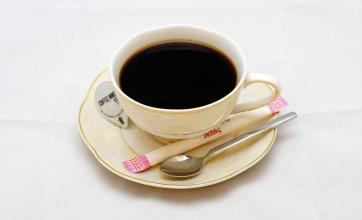Nicaraguan Coffee Manor introduces Los Congo Manor
Nicaragua coffee is one of the best in the world. It is mild and delicious, medium-sized and very aromatic. In many countries coffee production has been severely affected for political reasons. The coffee industry in Nicaragua is no exception. The revolution of 1979 forced coffee growers to flee to Miami. A period of uncertainty ensued as the Government considered whether to reallocate land, including many plantations, resulting in a shortage of coffee supplies and a decline in production from more than 1 million bags in the early 1970s to less than 600,000 bags in 1990. Now that the government has liberalized the coffee industry, private owners control the market. The best Nicaragua coffee is grown in the north and centre of the country, with the best coffee grown in Jinotega, Matagalpa and Nuevo Segovia. The best Nicaragua coffee falls into the category of Central Estrictamendte Altura coffee, which is very pleasant with moderate acidity and aroma. The lower-quality beans are widely used in blended coffee-los congos is one of the few farms that can be self-sufficient, raising their own livestock, logging, and making organic fertilizer from coffee berries, thus making their cultivation and processing completely chemical-free. It has the unique conditions of Central America-rich water resources and excellent water quality for planting coffee plus excellent volcanic mud soil, large cultivated soil area for rotation cultivation, proper rest and maintenance of soil fertility, high mountain shade planting, drip water washing technology, etc. The harvest period requires 2 years of care, and the cost is relatively high. Therefore, the cadura in this area tastes more with lemon or citrus soft fruit acid, leaving people with fragrant and attractive overall. Nicaragua's growing conditions are no less than those of Central America. Coffee grown at high altitudes has shade. The taste is round and balanced. There is not a strong acid. The main factors are war and hurricane attacks. As a result, single farms cannot continue to operate. There is no historical data for green bean traders to track farm data. Until 2003, the bad factors that caused coffee quality were removed. Poor transportation was also fully built. Good coffee gradually emerged.
Nicaragua coffee is grown in fertile volcanic soils, and SHG is the top crop harvested at altitudes of 1,500 to 2,000 meters. The local climate is alpine terrain surrounded by dense fog all year round and covers the whole mountain forest, resulting in a low temperature and humid climate environment. Years of mating evolution of tree species and adherence to the ancient time-consuming treatment process keep natural fruit acids and rich aroma. The shade planting is uniform in sunlight. Coffee fruits grow slowly and indirectly absorb moisture brought by dense fog. Therefore, the flavor of coffee beans is lively and changeable. Such a good coffee growing environment makes coffee with slight acid and warm characteristics. Delicious taste can feel the faint release of fruity and chocolate sweet throat, rich alcohol and multi-layered sweet back, even with the most simple filter brewing, but also to satisfy your taste buds desire, so that drinkers can not help but fall in love with that charming taste

Important Notice :
前街咖啡 FrontStreet Coffee has moved to new addredd:
FrontStreet Coffee Address: 315,Donghua East Road,GuangZhou
Tel:020 38364473
- Prev

Introduction to the kinds and flavors of Jamaican coffee
Jamaica Blue Mountain New Coffee beans the real Blue Mountain Coffee is one of the most favorable coffee growing conditions in the world. Jamaica's weather, geological structure and topography provide a unique ideal place. The ridge across Jamaica extends to the eastern part of the island, with the Blue Mountains rising to more than 2100 meters. The cool weather, foggy weather and frequent rainfall reconcile the rich land of Rain Water.
- Next

Panamanian Coffee Manor introduces Alida Manor
The manor is almost the highest in Panama, and nearly half of its area is in the National Conservation Park. it is an ultra-high altitude manor rarely seen in Central America. Elida Manor has a total area of 65 hectares, more than half of which are located within the Baru Volcano National Park, 30 hectares of the estate are planted with coffee trees, and the remaining 35 hectares are virgin forests. Coffee is grown at an altitude from
Related
- Does Rose Summer choose Blue, Green or Red? Detailed explanation of Rose Summer Coffee plots and Classification in Panamanian Jade Manor
- What is the difference between the origin, producing area, processing plant, cooperative and manor of coffee beans?
- How fine does the espresso powder fit? how to grind the espresso?
- Sca coffee roasting degree color card coffee roasting degree 8 roasting color values what do you mean?
- The practice of lattes: how to make lattes at home
- Introduction to Indonesian Fine Coffee beans-- Java Coffee producing area of Indonesian Arabica Coffee
- How much will the flavor of light and medium roasted rose summer be expressed? What baking level is rose summer suitable for?
- Introduction to the characteristics of washing, sun-drying or wet-planing coffee commonly used in Mantenin, Indonesia
- Price characteristics of Arabica Coffee Bean Starbucks introduction to Manning Coffee Bean Taste producing area Variety Manor
- What is the authentic Yega flavor? What are the flavor characteristics of the really excellent Yejasuffi coffee beans?

